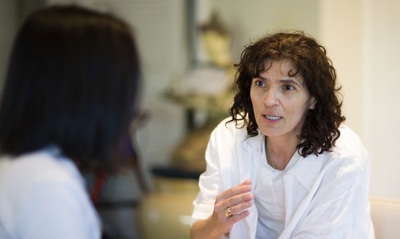

What the Performing Arts Can Achieve
Theatre arts can be an immensely beneficial tool for motivating and inspiring adolescent girls living in high risk, inner city communities to become optimistic drivers of change in their own lives as well as in their neighborhoods. Since the performing arts demands one uses the entire brain and body, it provides a healthy structure for adolescent girls to begin accessing complicated emotions. Theatre arts encourage positive self-expression and creative thinking and help girls cultivate social and leadership skills. The arts can also be used to encourage and stimulate pride and confidence in girls’ multi-cultural identities.
Why the Performing Arts Is Vital in Schools
If educators empower the dreams of teen girls living in high risk, low income communities, the quality of life for all of society will improve. Current research shows that violence amongst girls living in high risk cities is rising to levels higher than at any time in history. How does this affect the rest of society? When the female social networks within a population fail, the entire community fails. (And this is happening all over the world!) These susceptible communities can be improved if the adolescent and adult female networks within these communities are improved. When determined girls, with a support system of female mentors and peers, make a conscious effort to change their lives for the better, it is proven that the boys will follow. Therefore, performing arts programs in schools provide the ideal environment for female adolescents to be emboldened and develop their leadership skills so as to repair the destruction in society as a whole.
How Educators Can Make A Difference
It has been proven that adolescent girls involved in theatre arts have increased their abilities to solve problems non-violently, and are more capable of building and maintaining supportive peer relationships. High risk adolescent girls will appreciate creative opportunities to increase their self-confidence, to cope with their feelings, and to stimulate their creativity and intellect. After all, they often have no other positive alternatives and they are the ones who need these opportunities the most.

Since the rehearsal process and performance planning require patience, girls will gain tolerance of frustration with themselves, staff, and peers. They will learn that life’s challenges will cause them to occasionally feel disappointed, and they need to be able to manage their reactions positively. They will learn to appreciate each other’s individual gifts, and use them to work together cooperatively. Each girl will learn to discover power in her own fashion of leadership, and gain the confidence to apply and use it in the real world to improve herself and her community.
Educators do not need to be on a mission to create aspiring actresses as the performing arts is a therapeutic outlet for girls who have dreams of working in all professions. Theatre arts programs will only enhance their motivation to succeed in their chosen field of interest while substantially fostering and improving their creative and presentational skills as performers and emerging youth leaders.
How To Structure Your Program
Many schools in high risk communities run their programs after school and on the weekends. Girls should be challenged to create using dance, theatre, art, and poetry. These four artistic styles employ four different segments of the brain and encompass a diverse set of developmentally appropriate psychomotor and reasoning skills. One popular idea is to structure the program in three different levels.

In Level One, introduce yourself and other mentors to the girls. Here they will learn to connect with others, express themselves, and discover who they are. The girls will learn to respect their identities while receiving the encouragement of fellow females in the group also working towards the same goals. The art forms of theatre, dance, poetry, and fine art should be introduced in this level, combined with healthy problem-solving techniques and themes that emphasize their need to make healthy, sound behavioral choices in order to affect their lives positively. (After all, isn’t that what they are doing by participating in the theatre arts program?)
In Level Two, perhaps teachers could create a choreographed dance performance with masks that the girls fashion themselves. Each girl should depict a “super girl” character in the presentation (in front of an audience, of course), permitting them to exemplify, live, and communicate from a determined and powerful place. Using masks in general is extremely beneficial because they hide insecurities, promote self-discovery, and truly make performers feel as if they are connected with their emotions. This particular activity is even more effective because the girls create their own mask based on their own emotions, and therefore, the girls learn to connect with and accept their difficult emotions.
Level Three is all about taking action. Find creative ways for the girls to discover positive new tactics to deal with their issues, and to express their aspirations for the future of their neighborhoods and their lives. Even in the middle of life’s challenges, they will learn how to become promoters of change.
A Step at a Time
Life happens a step at a time as so too does the creative process. By being involved in such a process and seeing it through successfully to the end, girls at high risk can begin to understand that they possess both power and hope.
(For more information on how the Arts can impact at risk and high risk youth see Champions of Change: The Impact of the Arts on Learning and for an example of how theatre can help at risk girls see Moving Creations Philosophy page.)

 Random Item
Random Item